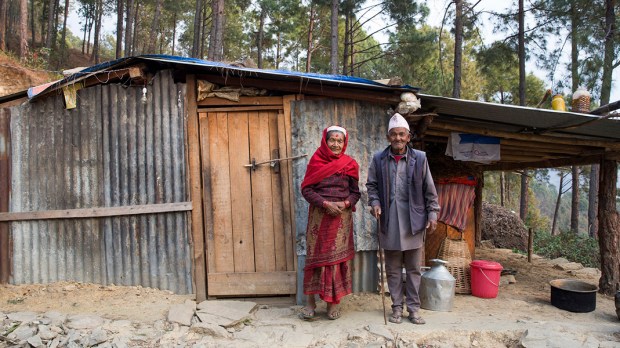On April 25, 2015, an earthquake shook Nepal. The country, reigning over the top of the world, was buried under rubble. The earthquake did not just topple historical buildings and temples. It also completely destroyed several villages, which disappeared alongside the lives of the thousands of people who inhabited them. Seventeen days later, on May 12, another earthquake destroyed whatever was left. Two years have passed since. What has happened to Nepal?
Luis Belvis is the general consul of Nepal in Barcelona. An expert in the area, he visits frequently. He is faithful to its mountains and to its people. During the earthquake, he was in charge of coordinating the participation of social entities, companies and individuals who wanted to contribute, in one way or another, with their “grain of sand,” to alleviate the suffering of the Nepalese people. “The scars are still healing,” he says. Two years ago, all help was short. Even today, every single bit of help is still welcome.
“A life you cannot recover, but you can have a new house”
“Whole villages disappeared with hundreds of inhabitants in them,” the consul told Aleteia. Many constructions were not well built and the 7.8 earthquake easily demolished them. “The country is still being rebuilt,” he adds. However, beyond rebuilding its infrastructure, the country needs to heal some even deeper wounds: more than 10.000 people died then.
“A life you cannot recover, but you can have a new house,” the consul affirms. Many families are still reinventing themselves, after suffering these many losses. “There is people who left their town that day and couldn’t find anything or anyone when they returned,” he adds.
Twenty-four months are not sufficient to go back to normal. Nevertheless, “Nepal is an optimistic country,” Belvis affirms. The character locals have shown in this situation is exceptional. “When you listen to them, and you understand them, you wonder how we would have reacted here. I’m sure it would have been quite different.”
According to the consul, the spirituality of Nepali society impels everyone to think more about others than themselves. “I remember the testimony of two blind Nepalese who would not simply stand idle and went out to give their testimony of hope on a radio station,” he explains. Belvis also notes that many Buddhist temples opened their doors and sheltered people who had nowhere to go.
“Nepalese know they are not alone”
Despite the fact the disaster no longer makes it to newspaper headlines or magazine covers as it did two years ago, aid is still arriving. “There are several projects from non-profit organizations that channel the aid and gradually improve everything.” Now, geologists are planning where to rebuild the lost villages, using anti-seismic materials. The consul stressed that “people have been very generous and a lot of aid has been arriving to Nepal, non-stop. That is how the Nepalese know that they are not alone in the world.”
Many of the people who have been involved from the first moment have affective ties with the country. They have visited it, they have friends there and join them with a great personal commitment. Likewise, Belvis recalls how, in the very midst of the crisis, he received people in the consulate who did not know Nepal but still wanted to offer their work.
A rebirth, then, is happening in Nepal. “The best way to help the country is to visit it,” the consul says. In fact, tourism was a major source of income before the earthquake and occupied a prominent place in the Nepalese economy. Now, for obvious reasons, tourism has slowed, but “you can already go back to trekking, as lodges and roads are ready.” The consulate is encouraging the Nepalese population to return to their country to help rebuilding it. “Tourism means work and resources for Nepalese,” he concludes.

